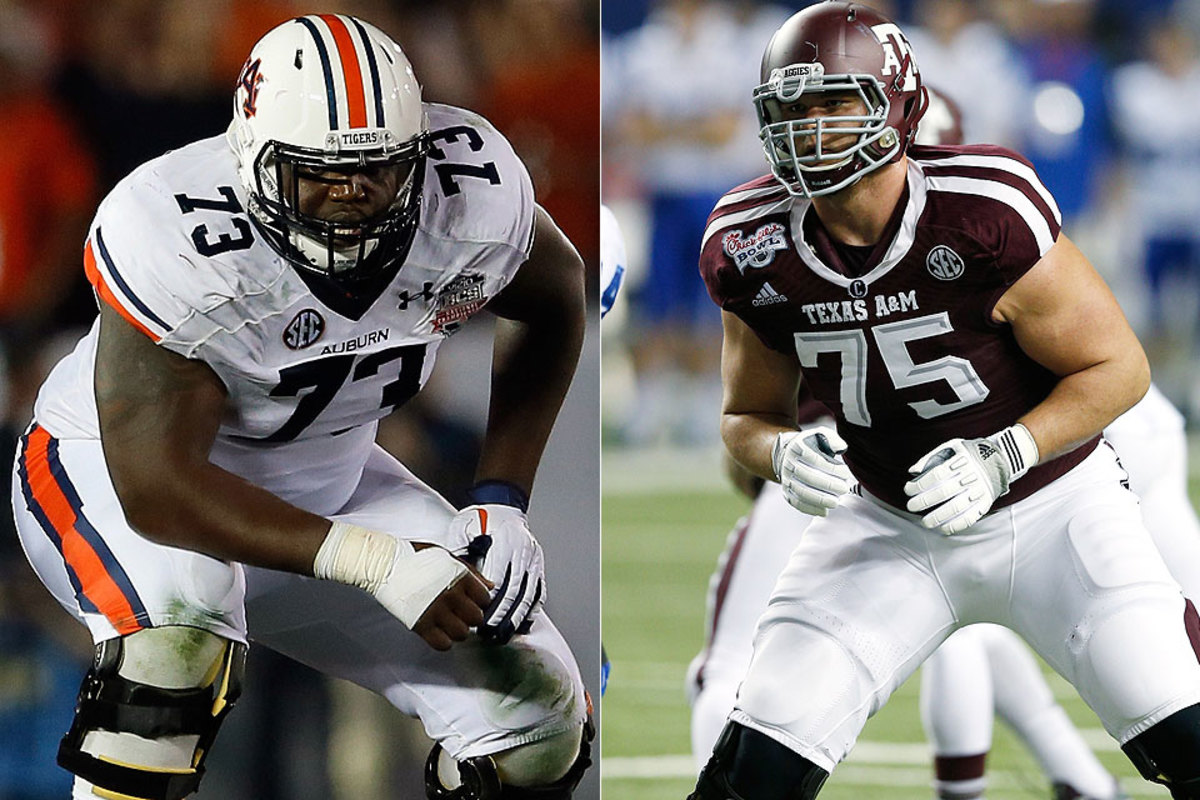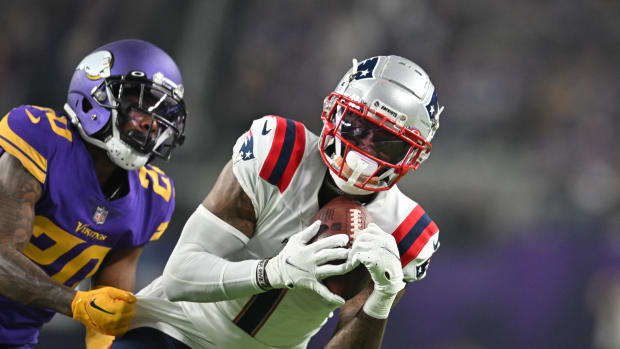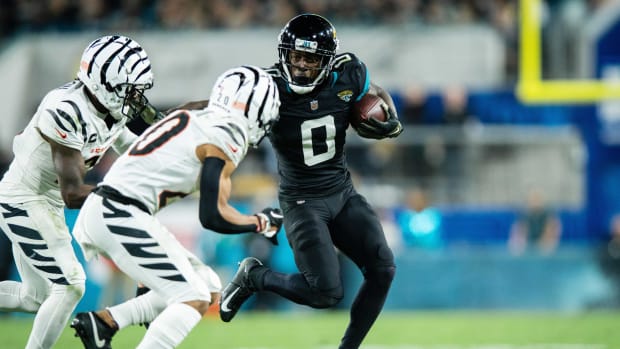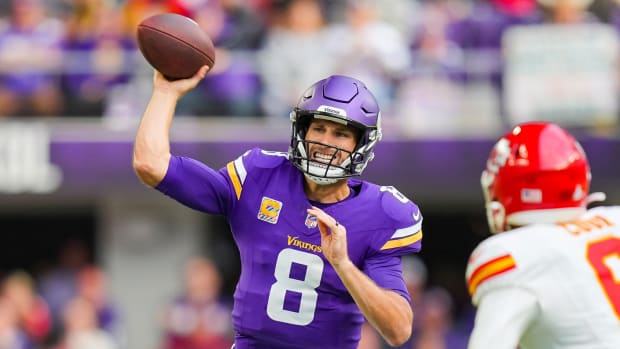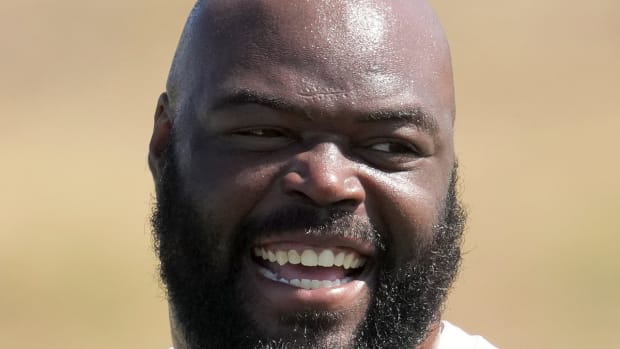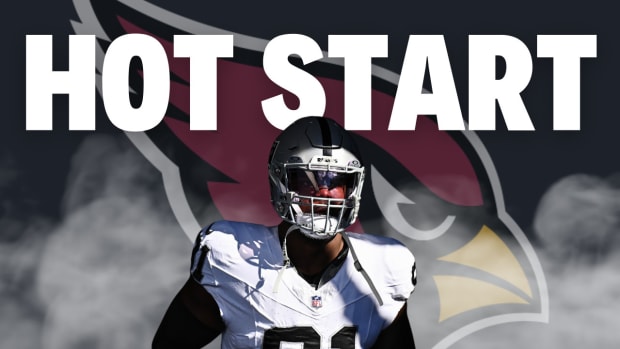Best of the Beasts
One of the toughest factors for NFL talent evaluators to nail down is a draft prospect's projection.
Players are not snapshots in time. Once they turn pro, most prospects will get physically stronger, improve their technique with better coaching and devote more time to what has become a full-time job. On the flip side, players react in different ways to being thrust into the life of a pay-for-play athlete and the freedom that comes with it.
Identifying how each player will progress physically and mentally from when they enter the league is a skill on par with gauging football character—the internal, unmeasurable love and passion the player has for the game and competition—as far as anticipating a player’s ultimate fate. Anyone can figure out who can run, block, tackle, throw and catch. Projecting the improvement and ultimate ceiling of a player in a given scheme? That’s the talent in player evaluations.
One of the key projections in this year’s draft is at the offensive tackle position. The top two players—Auburn’s Greg Robinson and Jake Matthews of Texas A&M—are completely different case studies. Robinson has all the physical tools, and has shown promising aptitude, to become one of the all-time greats at the position. But he only started 25 games in college at left tackle in a funky offense that was predominantly based on the running game. Matthews, who hails from one of the premier football families, is without question more ready to play in the NFL right now. He has 46 games worth of experience all over the line (13 at left tackle) in a pass-first scheme. In the technical aspects of playing the position, Matthews is far advanced for a rising rookie. But his physical tools are limited, which makes his ceiling likely a little lower than Robinson’s.
Who’s the better prospect? Who should be drafted first in May? After viewing six games for each player, here’s how I judge Robinson vs. Matthews:
Background and intangibles
Jake Matthews is the son of Bruce, the Hall of Fame guard. (Mitchell Layton/Joe Robbins/Getty Images)
Robinson, who will turn 22 in late October, didn’t make the transition to offensive line until his junior season at Thibodaux (La.) High School and redshirted his first season with the Tigers. His formative years were rough at times. The family had to leave their home for Houston because of Hurricane Katrina. His father, Greg Blackledge, died in April 2013. Dan Pompei of SportsOnEarth.com reported at the combine that his mother couldn’t watch her son play in the BCS Championship Game because money was short. Robinson has two brothers who have served time for dealing drugs. From all reports, Robinson is a terrific kid who took his brothers’ actions and learned what not to do.
Matthews, who turned 22 in February, has been preparing for the NFL his entire life as the son of Pro Football Hall of Fame guard Bruce Matthews and nephew of former Browns standout linebacker Clay Matthews Jr.; Jake’s brother, Kevin, is a center for the Titans. His younger brother, Mike, plays for the Aggies. Cousin Clay Matthews III is the star outside linebacker for the Packers. Matthews was a heralded prospect out of Elkins High School in Missouri City, Texas. He started the final seven games as a true freshman and never looked back.
Both Robinson and Matthews are intense competitors who play to the whistle with a nasty edge. They also don’t linger on mistakes and appear to play with mental toughness. Robinson does struggle at times processing blitzes and other odd pressures a defense might throw at him. Matthews has extremely high football intelligence and easily adjusts to the wrinkles being thrown at him.
EDGE: Matthews
Physical attributes
You’d be hard-pressed to draw up a potential franchise left tackle better than Robinson. He looks like he was born for it at 6-foot-5 and 332 pounds, with 35-inch arms (tied for fifth among all offensive linemen at the combine) and big 10-inch hands. Robinson’s 40-yard dash time of 4.92 was second only to Michigan’s Taylor Lewan, who isn't far behind these two as the third-best tackle prospect. Robinson tested through the roof in just about every category (including 32 reps on the bench made more impressive by his long arms), and it shows on film. Robinson is the proverbial dancing bear—a mammoth man with light feet and agility. He’s probably the most physical blocker in the draft, with the ability to dominate opponents.
Matthews is taller (6-5 ½ ) and lighter (308 pounds) than Robinson. He’s also slower (5.07) and weaker (24 reps) with shorter arms (33 5/8), but he’s a nifty athlete who showed eye-popping speed and agility in the three-cone drill (7.34 seconds). Matthews’ measurables line up with the film. He’s extremely light on his feet—he looks like a tight end at times—but his lack of strength can be an issue.
EDGE: Robinson
Run blocking
Greg Robinson's sub-5.0 40 was a head-turner—and earth-shaker—at the combine. (Joe Robbins/Getty Images)
Robinson is an elite run blocker, regardless of position. In Auburn’s offense, he was often asked to block head up against an opponent, or down block against a tackle before getting to the next level. Robinson is proficient and devastating at this part of the game, so it’s no wonder he was a focal point for the running backs. It’s easy to see that he loves to run block, and he takes great joy in caving an entire side of the line while maintaining the ability to block on the second (linebackers) and sometimes third (secondary) level of the defense. Robinson is not without issues in this part of the game, however. He can get caught bending at the waist, instead of maintaining a good knee bend, which can cause his pads to get out over his feet. That leaves him off balance and with less leverage against a counter move. Sometimes Robinson is too aggressive, and that can be used against him. Robinson also takes too long to gather himself to deliver a big blow. Smart defenders will recognize this, shorten the distance and get under his pads.
In the Aggies’ offense, Matthews wasn’t asked to run block as much as Robinson. But Matthews is a very good run blocker. While not as powerful as Robinson, Matthews is nearly as effective because of his superior pad level and overall technique. Matthews’ terrific feet were on display when he was asked to pull around right end—yes, from left tackle—to be a lead blocker on some sweeps. Matthews is terrific working the angles on the second level, but isn’t seen as often on the third level as Robinson. Matthews’ lack of ideal strength will show up more in the NFL. He’s going to need to get stronger to be a more complete player.
Edge: Robinson
Pass blocking
This is where the projection comes in for Robinson. Because the Tigers run such a unique offense, the sample size for Robinson’s pass blocking is limited. But there’s no question he can do it, especially with a lot more work on the fundamentals. Robinson does not exhibit a classic kick slide in pass blocking; it’s more of a shuffle. He’s such a good athlete that it’s still very effective. Robinson does a good job mirroring the rusher, and his arm length is a big weapon especially when you consider that his punch at the point of attack is underdeveloped. Smaller, quicker edge rushers can get under him, but he never gets overpowered. Robinson’s bad habit in pass protection is that his hands can get outside and he can get grabby and draw holding penalties. But these limited flaws can be cleaned up with good coaching. Once Robinson becomes a cleaner player in pass blocking, he could be unstoppable.
Outside of a kick slide that is more like a kick and a few stutter steps, Matthews is technically sound in his drops and execution. He “sits in the chair” nicely and is always in control against an opponent. Matthews mirrors the rusher with rare ability thanks to his agility. Against most college opponents, that’s enough to dominate. However, Matthews showed some difficulty dealing with power, especially in the Auburn game, which will give some NFL teams pause. That is where his less-than-ideal arm length and strength shows up. Matthews certainly looks the part, but he plays light on film, meaning he can be pushed around some and that could lead to problems at the next level. His arm length of 33 5/8 is above the preferred minimum threshold of 33 inches for a left tackle, so perhaps a few years in an NFL weight room could shore up these weaknesses.
Edge: Even
Overall
This is not quite a classic case of potential (Robinson) vs. polish (Matthews). There is enough evidence on film for evaluators to feel comfortable making a projection on both players. Robinson has all the tools and has shown the potential in the pass game; if teams feel he can learn and work at his craft, then Robinson could be an all-time great. It’s a question of how long that will take, and where do you play him in the interim (Robinson would be a devastating left guard for a year or two). Former Rams left tackle Orlando Pace, who likely will be elected into the Pro Football Hall of Fame in 2015, is the player whom Robinson is most often compared with in league circles because of his physicality in the run game.
Matthews also has much to like, including technique, a mind for the game, his temperament and athletic ability. He really only lacks strength, and that should come in time. There’s little question he could play left tackle quickly in the NFL. You can make a convincing argument that Matthews is a better prospect than former Aggie teammate Luke Joeckel, who was taken second overall last year. (The next prospect at Left Tackle U, Cedric Ogbuehi, could be even better than Matthews and Joeckel; he pops off the film.) But like Joeckel, Matthews will have initial struggles. His best fit might be on a team that has a left tackle, and perhaps Matthews can play guard in the interim until he gets stronger. Remember, the Ravens drafted Jonathan Ogden fourth overall in 1996 to play left guard for a year next to an established left tackle in Tony Jones. Matthews has great positional versatility going for him; he could play any position on the line, including center (not to mention he has long-snapping experience).
Matthews is better today, but Robinson’s vast potential shouldn’t be hard to unlock. That makes Robinson my pick as the top tackle prospect in this draft.
































